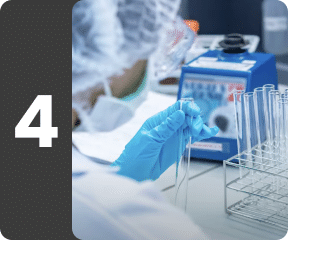Platelet Count
Understanding Platelet Count
What is Platelet Count?
A platelet blood count measures the average number of platelets in the blood. Platelets are a type of blood cells that help to heal wounds and prevent excessive bleeding. Platelets count helps to monitor and diagnose certain medical conditions, and also looks for the cause of too much bleeding or clotting.
A lower-than-normal platelet count is called thrombocytopenia. This can be due to cancer treatment and autoimmune disorders. A higher-than-normal number of platelets, called thrombocytosis can be due to certain infections and iron deficiency.
Changes in platelet count could indicate a chronic illness or an issue with the bone marrow; but to diagnose the exact medical condition further testing might be required.
What is Platelet Count used for?
The platelet count is done:
As a part of routine complete blood count
In case of signs and symptoms of bleeding disorders such as easy bruising and prolonged bleeding
To monitor platelet count in case of conditions showing low platelet count such as dengue fever
To detect bone marrow disease
What does Platelet Count measure?
The platelet count measures the number of platelets present in the blood. Platelets are also known as thrombocytes which are tiny fragments of cells. These are formed from large cells which are found in the bone marrow known as megakaryocytes. After the platelets are formed, they are released into the blood circulation.
Whenever there is an injury to a tissue or blood vessel, bleeding starts. At this point, platelets help in stopping the bleeding in three ways:
The platelets will adhere to the injury site
The platelets will accumulate at the injury site
The platelets will release chemical compounds which stimulate gathering of other platelets
With these steps, a loose platelet connection forms at the site of injury. This process is known as primary hemostasis. The activated platelets start to support the coagulation cascade which involves a series of steps that includes the sequential activation of clotting factors. This process is known as secondary hemostasis which results in the formation of fibrin strands that knit through the loose platelet connection to form a fibrin net. After that, the connection is compressed to form a stable clot so that it remains in place until the injury heals. Once the injury is healed, other factors come into play and break it down so that it gets removed.
In case the platelets are not sufficient in number or are not functioning properly, a stable clot might not form. These unstable clots can result in an increased risk of excessive bleeding.
Interpreting Platelet Count results
Interpretations
The normal platelet count ranges from 150,000 to 410,000 platelets per microliter of blood.
Frequently Asked Questions about Platelet Count
Q. In which conditions low platelet count can be seen?
Q. If my platelet count is abnormal, what follow up tests might my doctor order?
Q. How is the blood sample taken?
Q. Is there any risk associated with the withdrawal of blood sample procedure?
Q. What are the signs and symptoms associated with low platelet count ?
Q. In which conditions high platelet count can be seen?
Book a Platelet Count test at home near me





Other tests








